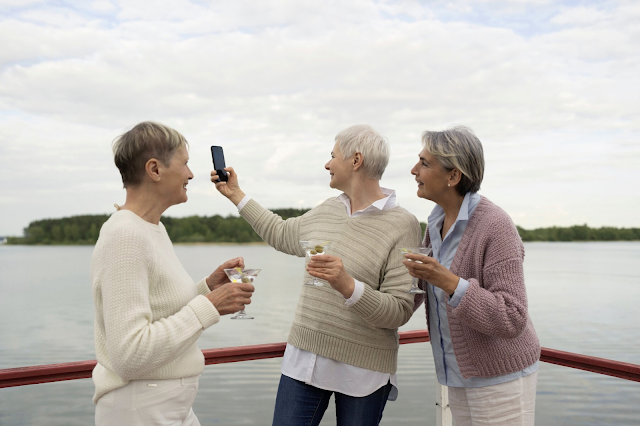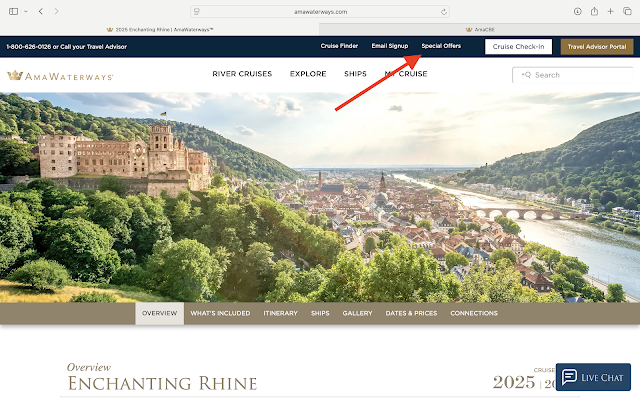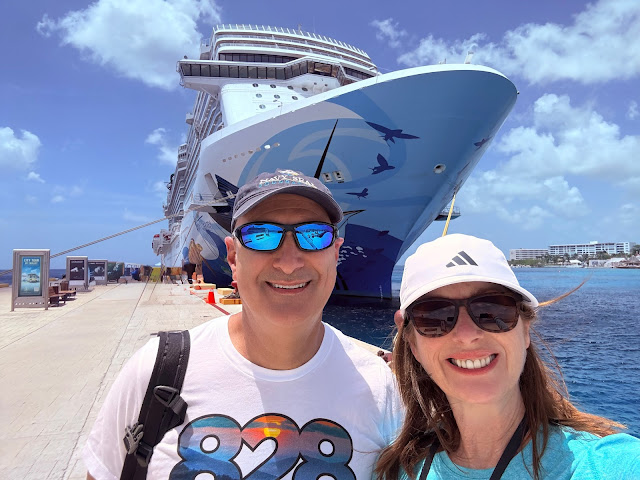When it comes to cruise and travel gear, few things are more underrated than a good umbrella. Sure, many cruise lines provide them—but they’re usually bulky, hard to carry, and require a full hand to hold. Plus, once wet, they’re tough to stash without soaking everything in your bag.
That’s why I always pack my favorite: the Knirps Ultra Light Slim Manual Open Rain Umbrella. It’s hands down the best travel umbrella I’ve found, especially for cruisers, city walkers, and day-trippers who need protection without added bulk.
 |
| Cologne, Germany |
Why I Love the Knirps Ultra Light Travel Umbrella
This ultra-compact umbrella is designed for on-the-go travelers like us. It weighs only 4 ounces and folds down to just 8 inches long—small enough to tuck into the side pocket of my Travelon Classic Messenger Bag or a small backpack. The included slip-on cover is a lifesaver when the umbrella is soaked, keeping the rest of your belongings nice and dry.
Despite its featherweight size, the Knirps umbrella holds its own in windy weather. It's not immune to strong gusts—it may invert briefly—but I’ve always been able to pop it right back into shape in seconds.
Here are the key features that make this umbrella a travel essential:
Compact and Lightweight: Closed length of 8 inches, and weighs just 4 ounces.
Decent Canopy Coverage: The 35-inch canopy keeps you covered without making the umbrella awkward to carry.
Wind Tunnel Tested: With six reinforced ribs, it has been tested to withstand wind speeds of up to 62 mph (100 km/h).
Manual Open and Close: No fussy buttons—just smooth manual operation whenever you need it.
Includes Carrying Case: Keeps the rest of your gear dry when the umbrella is wet.
It’s no wonder Knirps, which literally means “little guy” in German, has been a favorite brand since 1928. This little guy packs a punch! We also love that it comes in a variety of patterns beyond basic black—perfect for standing out in a crowd and making it easier for your travel companions to spot you quickly!
What to Wear with It: My Favorite Raincoats for Travel
Staying dry doesn’t stop with your umbrella. These are the two raincoats we never leave home without when packing for cruises or active vacations:
For women: Avalanche Black Lightweight Raincoat – Stylish and breathable, this coat layers easily and keeps you dry without overheating.
For men: Helly Hansen Breathable Waterproof Jacket or Brooks Men's Waterproof Running Jacket – Both are excellent for layering and provide breathable protection, even when you’re out walking or hiking. Our Helly Hansen jackets worked great on our Viator tour of Blenheim Palace from London.

Blenheim Palace Tour with Helly Hansen Jackets Helly Hansen Jacket in Dusseldorf Avalanche for women and Brooks Jacket for men Cologne, Germany with Travelon Classic Messenger Bag
Bonus Tip: Waterproof More Than Just Yourself
You can also protect your gear with Kiwi Camp Spray. This water-repellent spray works wonders on shoes, bags, jackets, and even backpacks. I use it before every cruise or rainy-season trip.
Final Thoughts
Packing light and smart for a cruise or international trip means choosing gear that works hard without taking up space. The Knirps Ultra Light Slim Umbrella is my go-to for reliable rain coverage that won’t weigh you down—perfect whether you’re exploring a European port or dashing between terminals in a rainy airport.
And remember: staying dry doesn’t have to mean sacrificing space, comfort, or style. Happy (and dry!) travels.














































